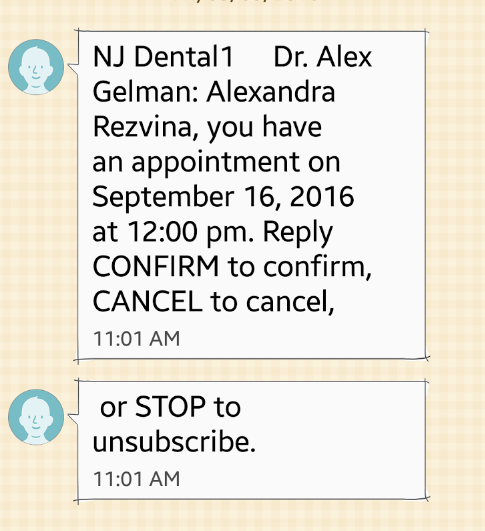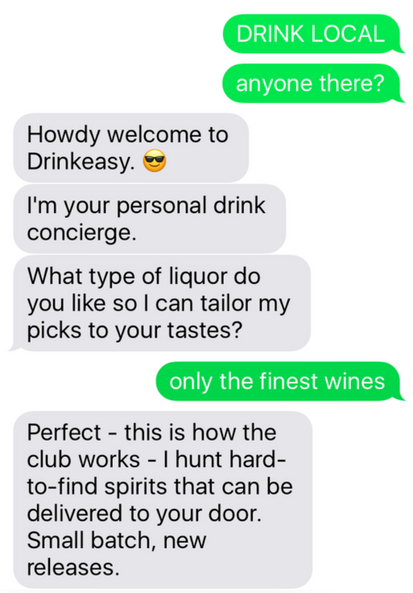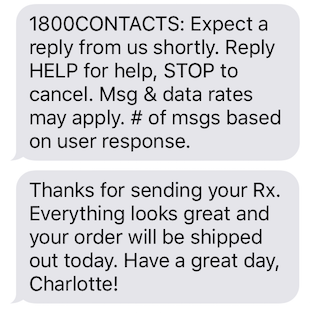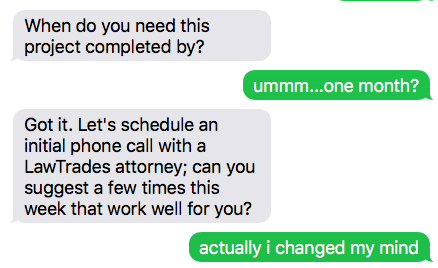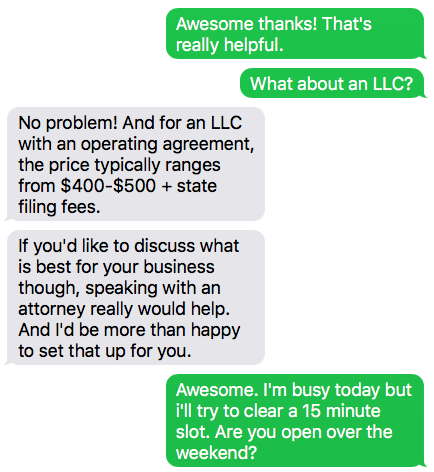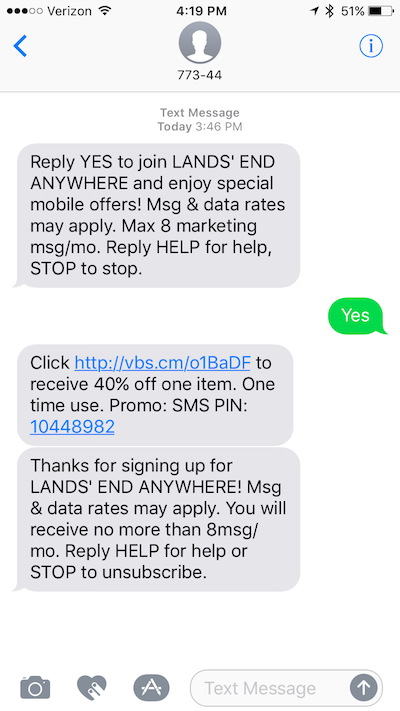Extending SMS across the entire customer lifecycle.
The 3 Phases of Lifecycle SMS
“Messaging allows us to…go with customers wherever they are and to interact with services in an asynchronous way.”
–Chris Messina, Developer Experience Lead at Uber, Sonarcast 1
Messaging is a radically different medium than channels businesses are most familiar with: email, social, or push. You can’t just cut and paste a five-step conversion funnel, graft it onto SMS, and call it a day.
As tech analyst Ben Thompson points out, conversion funnels typically look something like this:
(source: Stratechery)
Google owns the bottom of the funnel because it can put people in front of items they already want to buy. As Thompson astutely remarks, the impact of messaging will be seen in the middle of the funnel by moving customers faster from interest to action through 1:1 communications.
Breaking down your funnel and figuring out the number of steps between acquisition and conversion is crucial for tracking how well you’re meeting your business objectives. But you need to balance this with an understanding that messaging and SMS is all about establishing a two-way dialogue with your customer.
The three basic phases of the SMS lifecycle are:
- Onboarding: Get to know you through progressive conversational profiling
- Activation: Show the value of the product and get the user to the aha moment
- Conversion: Answer questions, provide support, and lead the customer to a purchase decision
Let’s take a look at how this works in practice.
Onboarding: The “Meet and Greet Message”
First impressions matter. The way you interact with a customer for the first time sets the stage for the rest of the relationship. As Pulkit Agrawal, CEO of user onboarding tool Chameleon writes, “Great onboarding is only the first step towards an amazing customer experience that actually retains users.” That’s why user onboarding is so important for web and mobile apps.
It’s no different for your messaging strategy. If you want to establish a dialogue over SMS or Facebook Messenger, you have to set the tone right. Even if you have a simple goal, don’t make it purely transactional:
Instead, use the opportunity to learn more about them and get them hooked on your service. Because we all check our phones all the time, SMS is an extremely effective channel for engaging and retaining customers.
This is something that the founders of Drinkeasy, an on-demand service that ships craft beer, wine discovered. Their first forays into SMS led to much higher adoption and repurchase rates than they saw with their native mobile app—leading them to scrap the mobile app in favor of SMS.
Drinkeasy’s SMS onboarding cycle begins with one simple goal—figuring out what kind of alcohol new customers like to drink.
Instead of asking new customers for this information point-blank, they take the time to provide context around why they’re asking. It’s not too different from how you’d normally talk.
Within the first five minutes of texting Drinkeasy, the company is able to achieve four things:
- Explain what Drinkeasy does.
- Outline terms of service in plain English.
- Learns the customer’s name (Sasha), liquor preference, name, and zip code.
- Gather all the info needed to give Sasha her first drink recommendation, and one that she’s likely to buy!
For Sasha, there’s a low barrier to entry for the service. For each bit of personal information Drinkeasy asks for, it provides an articulate reason for why that will help Sasha. It’s like requesting permissions on the app store, only Sasha doesn’t even have to download an app.
Even if Sasha doesn’t immediately make a purchase, it opens the doors for the relationship. Once you’ve gathered information about the customer through conversation, you’ve built a profile that you can use for further marketing down the line.
Activation: Cut to the Value
But once you’ve got your customers hooked, you need to get them to the next step of the funnel. For a B2B service, this might appear in a 12-step automated drip email campaign. With messaging, it’s a little different. You’re in a two-sided conversation, which allows you to get much more intimate with your customers. But it’s up to you to get the conversation going.
Some of your messaging outreach will be automated, with canned responses—that’s what let’s messaging scale. But the trick is to weave that seamlessly into when you are talking to customers.
Don’t come off as obviously a robot, like this automated message from 1800 contacts does:
Instead, map out the conversation. Even if you’re automating parts of your messaging flow, make sure that the switch between an auto-reply message to a human happens seamlessly.
Lawtrades, a legal services company, is a great example. Following a crisp onboarding sequence, Lawtrades moves straight to getting you on the phone with a lawyer:
Although this sequence is automated, it remains crisp and conversational. The moment a customer switches gears, Lawtrades has a customer service rep waiting in the wings ready to answer any additional questions.
After being asked the cost of incorporating a company is, she also can give guidance on an LLC:
The main value that Lawtrades provides is the ability to get you on the phone with a lawyer, as quickly as possible. But customers often have questions before they’re willing to commit—that’s why they’re texting you in the first place.
By adopting a mix of automated and personalized messaging, you can give them the information they need to take the next step.
Conversion: Closing the deal via text
Just like in people-to-people sales, getting your customers to buy things over text means helping them and building trust. It’s not just a conversions game where you’re trying to squeeze the numbers.
There’s an art to the close over text messaging, and it’s all about getting personal with your customers—not sending discount codes in all caps. Launching promotions and discount codes can work extremely well when worked into the conversation, but not when they come completely from left field:
Bohemian Guitars is a company that sells handcrafted guitars. They originally got into SMS because they noticed that their website had a ton of mobile traffic. It’s secret is that it keeps conversation casual and personal—no different from a normal text conversation. The sales team helps customers pick guitars by asking them questions about playing styles, and teaching them what guitar would suit best.
When a sales rep doesn’t have an answer, they’re not afraid to say so:
Making sales over text is all about building relationships. The flip side is that, as Bohemain Guitar co-founder says, “it is extremely important that you don’t abuse your texting-relationship with your customers.”
Lifecycle SMS is about Customer Experience
Part of what makes figuring out SMS so hard for a lot of businesses is that there is so much you can do. You can send notifications, marketing promotions, provide support and more all through a simple text interface.
You need to remember that messaging works because it facilitates fast, asynchronous communication. Rather than requiring customers come onto your website, or forcing them in your app, SMS puts you literally in the customer’s pocket.
That means that your lifecycle SMS strategy can’t just be defined by what you want. At every stage, from activation to conversion, you need to be focused on how you’re making things easier for the customer.

